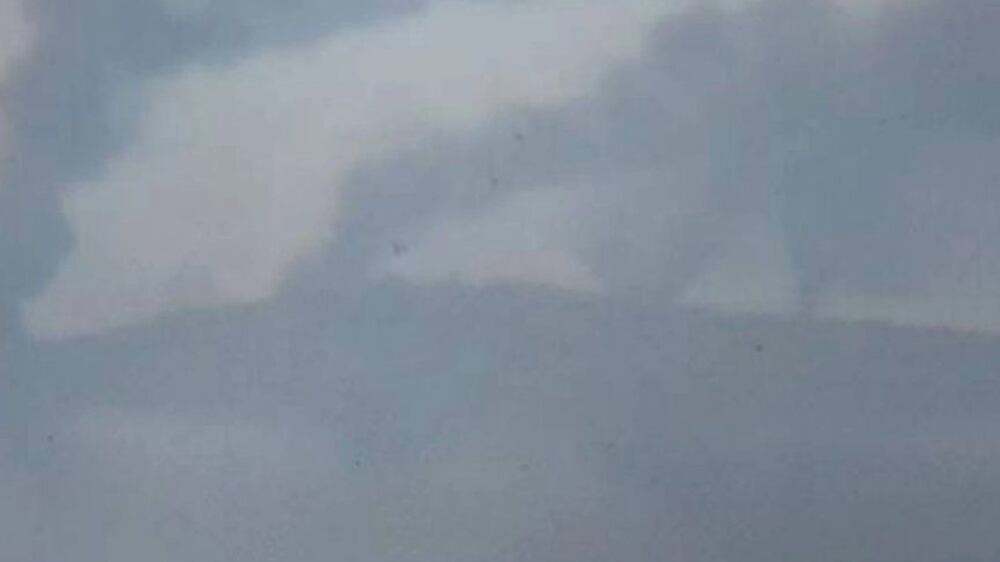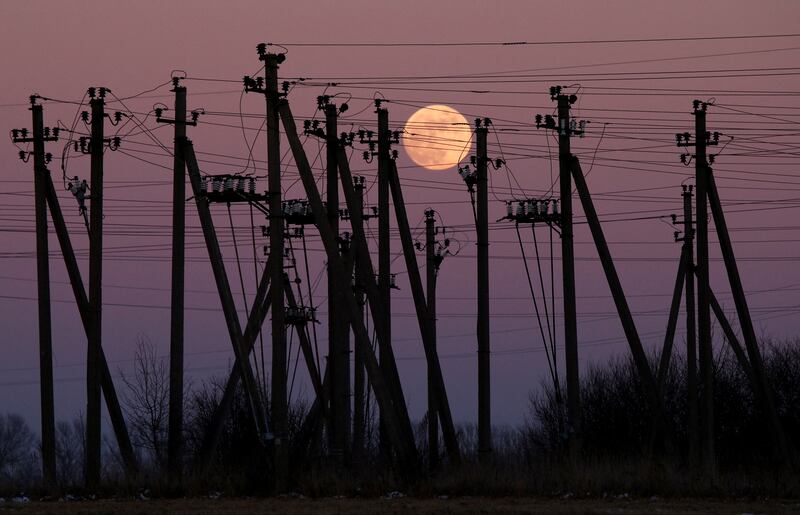Ukraine has started exporting electricity to the EU, President Volodymyr Zelenskyy has said, providing much needed revenue for the embattled country and an alternative energy source for Europe.
Mr Zelenskyy said the transmission of power to Romania was the start of a process that could help Europe to reduce its dependence on Russian hydrocarbons.
The move comes at a time when Russia has reduced gas supplies to the bloc, which is supporting Kyiv in resisting Moscow's invasion.
Several European countries, including Italy and Germany, are highly reliant upon Russian gas for their energy needs but have been forced to look for alternatives as Moscow slashes deliveries.
Mr Zelenskyy's comments in his nightly video message on Thursday came after an announcement by Prime Minister Denys Shmyhal that exports had started earlier in the day — with a volume of 100 megawatts — four months into Russia's war in Ukraine.
Mr Zelenskyy said the start of exports was “another significant step in our movement toward the European Union”.
“Thanks to Ukrainian electricity, a significant part of the Russian gas used by European consumers can be replaced. This is therefore not just a question of export earnings for us but a question of security for all of Europe,” he said.
“Let me remind you that linking our country to the common EU energy system took place already after the war began. Ukraine is doing things now that once seemed impossible.”
Ukraine reached an agreement in mid-March to join the European Network of Transmission System Operators (ENTSO-E) as an observer after its grid was linked to that of the EU.
The ENTSO-E said this week that preparations had been completed for the first exports from Ukraine, together with power from former Soviet state Moldova, starting on June 30 — using an interconnection with Romania.
Electricity trading on other interconnections between Ukraine and Slovakia, Ukraine and Hungary, as well as between Moldova and Romania would soon follow, it said.
The group said the total trade capacity would initially be set to 100MW in the first phase.
“This is only the first stage. We are preparing to increase supply,” Mr Zelenskyy said.
European Commission chief Ursula von der Leyen tweeted that the Ukrainian exports “will provide an additional source of electricity for the EU. And much-needed revenues to Ukraine. So, we both benefit.”
The EU has strongly backed Ukraine following Russia's February invasion, slapping Moscow with a barrage of sanctions and granting Kyiv “candidate status”, a first step towards membership within the bloc.
In other developments in the four-month war, Russian missiles hit an apartment building and a resort near Ukraine's Black Sea port of Odesa early on Friday, killing at least 17 people and wounding dozens, Ukrainian authorities said, the latest in a spate of deadly missile strikes.
With its ground forces concentrated in Ukraine's eastern industrial region of Donbas, Russia has more than doubled the number of missile strikes around the country in the past two weeks, using inaccurate Soviet-era missiles for more than half of the attacks, according to a Ukrainian brigadier general.
Ukrainian forces were desperately hanging on against Russia's superior firepower in the city of Lysychansk.
Russian artillery shelled from different directions while the Russian army approached from several sides, regional governor Serhiy Gaidai said on Ukrainian television.
In contrast, Ukraine on Friday celebrated driving Russian forces from the strategic Black Sea outpost of Snake Island while struggling to hold off intense assaults in the eastern industrial city of Lysychansk.
Russia said on Thursday it had decided to withdraw from Snake Island as a “gesture of goodwill” to show Moscow was not obstructing UN attempts to open a humanitarian corridor allowing grains to be shipped from Ukraine.
Russian forces withdraw from Snake Island

Ukraine said it had driven Russian forces off the outcrop after an artillery and missile assault, with Mr Zelenskyy hailing the strategic win.
“It does not yet guarantee security. It does not yet ensure that the enemy will not come back,” he said in his nightly video address.
“But this significantly limits the actions of the occupiers. Step by step, we will push them back from our sea, our land and our sky.”







